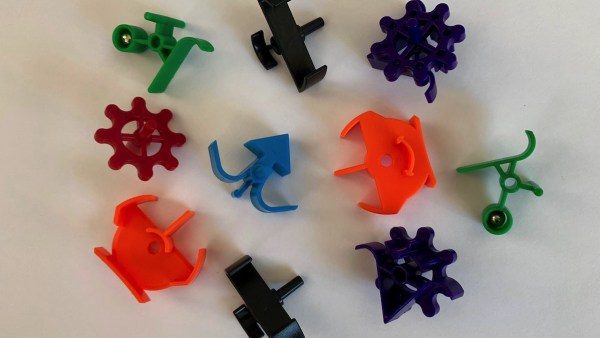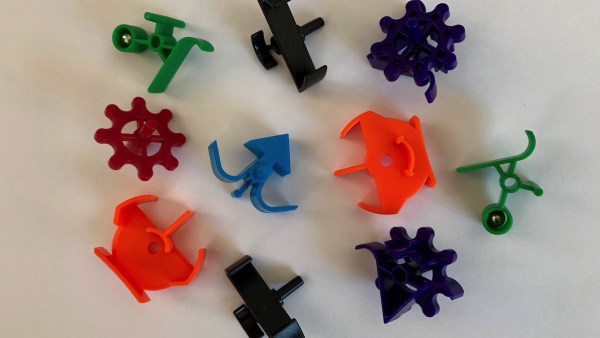
Ticketa tick. Ticketa tick.
A blue metal ball slides onto a green ramp that swings down to transfer the ball to another ramp. Which in turn pivots the ball into an orange shape—my daughter calls it a “strongman”—that scoots the ball to the other side of the vertical board. A few more hand-offs, and the ball triggers a switch that lets a red ball down the path. Ticketa tick. The red ball follows a symmetric course, triggering a blue ball. Which then triggers a red ball to begin its serene journey.
The satisfying clicking and mesmerizing path form a simple machine that takes one row of blue balls and one row of red balls and makes an alternating pattern at the bottom. You only wish it could go on longer, so you could keep watching.
And thus another Turing Tumble puzzle is solved. Numerous people pointed me to the Kickstarter campaign when it launched. The idea was both simple and revolutionary. Teach kids (and adults) how computers work at their most fundamental level: electrons moving through logic gates. But use balls instead of electrons, and use gravity and swinging parts to make systems that look vaguely like pachinko machines but actually emulate bits, logic gates, registers, and more. As the instructions say, make a board roughly the size of Texas, and you’d have a computer equivalent to your smartphone.

The box is sizable. It needs to hold a large collection of components: the poster-sized Turing Tumble board, the two pieces that assemble to make its stand, and all the parts you use to solve the puzzles. The puzzles are embedded within the pages of a manga-inspired comic book that shows a space repair person encountering an AI made of cascading metal balls like the ones in the box. As she learns about the unusual machine, so do you. Every few puzzles, new pieces get introduced to your repertoire. Green ramps simply shuttle the ball about, orange crossovers let balls from either side move to the other, blue pieces act as bits that flip between two orientations, black pieces intercept balls and stop them, and purple and red gears form bits that change relative to each other.
In the early puzzles, you are told how many of each piece you can use. As time goes on, the guide effectively says “use whatever pieces you need.” But by then you’re comparing two 4-bit numbers to see which is greater and even building 4-bit adders. All with ball bearings and parts that flip and turn. Turing Tumble may be designed to teach kids about computers, but the later problems are good for adults, too. Especially programmers like me who can tell you a lot about code before it gets to the CPU but much less about when it gets down to the electrons themselves. I’ve seen estimates online that the hardest puzzles can take hours to solve. The easiest ones I solve by just looking at them.
The game says 8+ and this is probably right. When my almost-6-year-old and I sit down with it, I usually ask her for ideas, query her about obstacles I see ahead, and then walk her through the setup we’ve made so we can both check the logic. But I don’t think she’d solve any but the easiest problems on her own.
One thing I’ve noticed, which may not be an issue with older kids who have more physical control, is that it’s best to stack up the balls right when you’re ready to try your machine. It’s too easy for a simple bump to knock some balls out of their channel and into the main area, at which point they’ll start triggering switches, flipping bits, and otherwise wreaking havoc. We load up the balls and hold the bottom gates up to prevent a cascade of motion before we’re ready.
An important part of Turing Tumble the product is Turing Tumble the community. The forums provide a space for enthusiasts to share new problems, talk about using the marble machines in classrooms, hack the board, and even swap STL files for those with access to a 3D printer. Users have even built Turing Tumble simulators (including in VR!) for prototyping online. But the JavaScript simulators, at least, don’t capture the feel of watching a tangible machine click away in front of you.
While my daughter will probably get into it more when she’s older, even now she likes watching the clicking finished machines as much as I do.
Turing Tumble is available for general purchase from their store for $65-$70. You can also buy extra parts and DIY-ready files.



